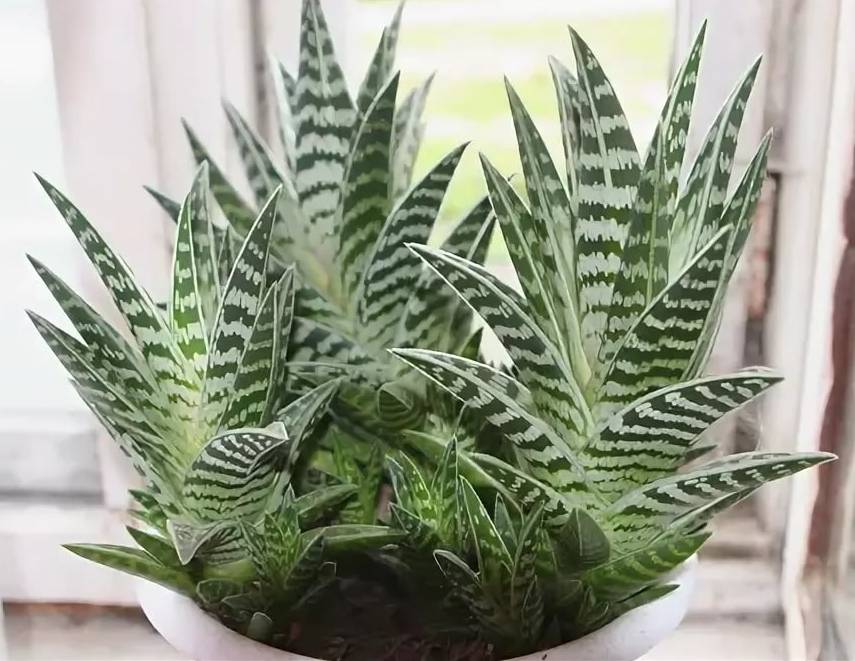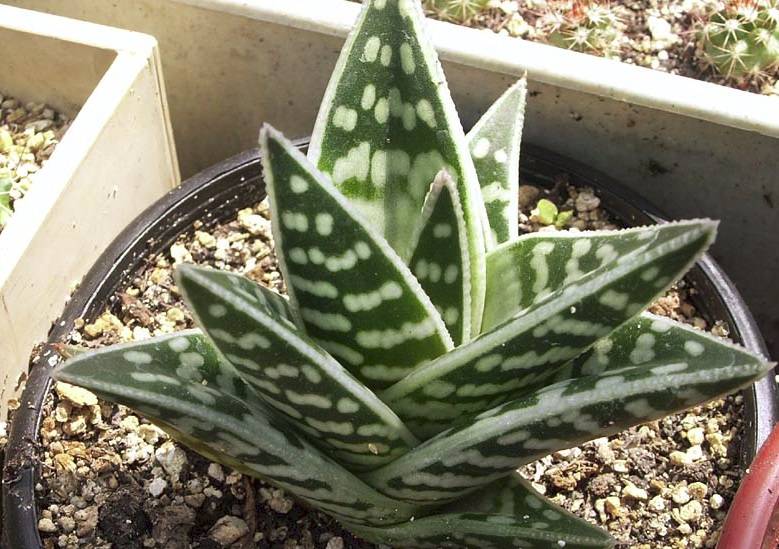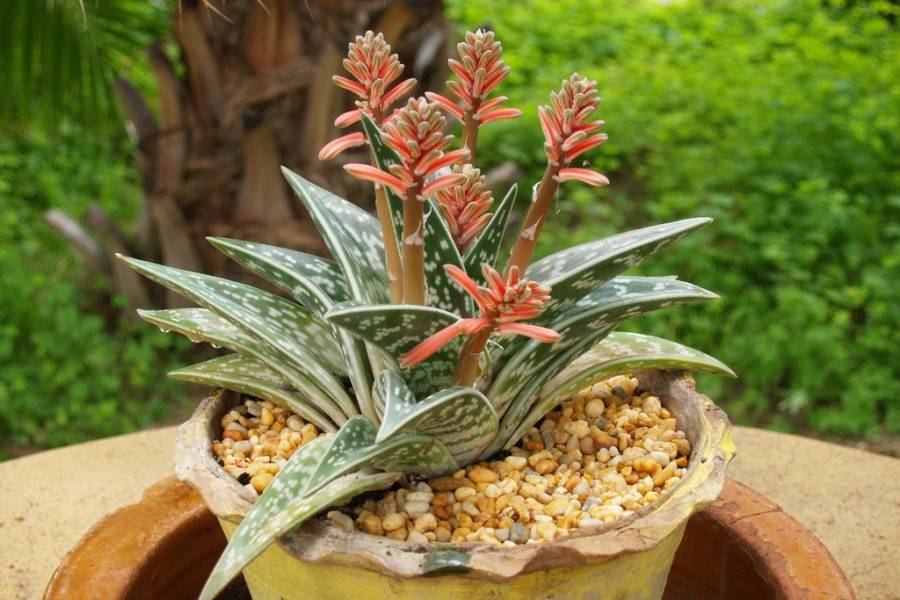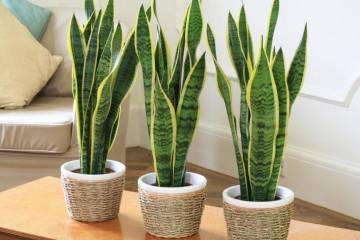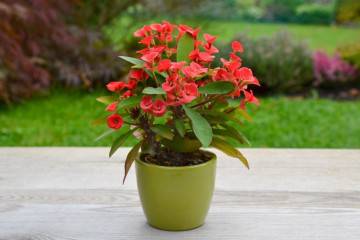Aloe variegated or tiger - what is this flower
Content:
Due to its beautiful appearance, variegated aloe will perfectly fit into any interior. This succulent is quite popular among flower growers, as it combines attractiveness, unpretentiousness and ease of care. In addition, the flower has medicinal properties, and it is actively used in folk and traditional medicine.
Description of what aloe variegata looks like
Aloe Variegated or Tiger (Aloe variegata) is a herbaceous perennial from the Asphodelic family. Belongs to succulents. One of the few species that bloom at home.
Tiger Aloe grows as a dense, compact, low-growing bush. The height of an adult plant is 30-35 cm. The leaves are triangular, pointed at the apex, arranged in three rows. The edges of the leaves are serrated. The color of the leaves is both bright green and dark green. There is a white border around the perimeter. The top of the leaf plates is spotty, white spots and stripes are symmetrically located on all surfaces.
Important! The plant accumulates moisture in the pulp of the leaves, and this helps it survive during long dry periods.
Healing properties
Aloe Variegated - a useful flower, and has the following healing properties:
- Promotes rapid wound healing.
- Helps to cure rhinitis and sinusitis.
- Relieves any inflammation.
- Thins the blood.
- Improves the functioning of the gastrointestinal tract.
- Stimulates the excretion of bile.
- Improves skin condition, helps to reduce wrinkles.
- Has antimicrobial and bactericidal effect.
Note! The composition of aloe variegated contains 20 acids necessary for humans, and the human body cannot synthesize 7 of them on its own.
Aloe Variegated: home care
In order for the scarlet to grow well and delight with flowers, it is necessary to observe the watering regime, provide the plant with sufficient lighting and organize the correct temperature regime.
Illumination and temperature conditions
This indoor flower loves bright light, so it must be placed on the windowsills on the south side of the apartment. In winter, it is worth arranging additional lighting for 3-5 hours a day.
The comfortable air temperature for the plant during the active growing season is 18-24 ° C. During the rest period, it is better to lower the temperature to 14-18 ° C.
Attention! If the air temperature is too high, the leaves will turn brown. In order to restore their color, the plant must be removed for a week in a shaded place.
Watering rules and humidity
Water the succulent plant only after the soil is completely dry. In spring and summer, variegated aloe is watered once a week, in autumn and winter - once a month. Air humidity - no more than 40%. The plant does not need spraying.
Top dressing and soil quality
For feeding aloe, only the root method is used. Fertilizers are applied after watering or diluted directly in the water. They use specialized mineral complexes for aloe and succulent plants. From organics, wood ash, humus and decoctions from vegetables are best suited.
Important! During an active growing season (from March to September), fertilizing is applied once every seven days.During the dormant period (from October to February), the plant is not fed at all.
The soil for aloe should be light, loose with a slightly acidic reaction. For planting a flower, you can use a ready-made substrate or prepare it at home. The composition should be as follows: sod and leafy soil, humus and sand. Everyone is taken in equal proportions.
Flower container size
It is worth choosing a pot for scarlet so that it does not differ much in volume from the previous one, otherwise the roots will have to spend a lot of time and effort in order to gain a foothold in it. It is best to choose a wide pot shape.
Pruning and replanting
In the spring, pruning of dried and damaged leaves is carried out, and faded peduncles are also removed. This procedure helps to maintain a pleasant aesthetic appearance of the plant.
Young plants at the age of 1-3 years are transplanted annually, since they grow up to 10 cm in one year. After 4 years, the growth rate slows down or stops altogether, therefore, the plant needs to be transplanted once every 3-4 years.
Flowering and dormant period of Tiger Aloe
Aloe Variegata bloom in April. Only adult plants that have reached three or five years of age bloom. At the top of the long (up to 25-30 cm) peduncles, inflorescences are formed. The flowers have pink or pale red petals with light green stripes and a yellow center. The length of the flowers is about 3 cm, the shape is elongated tubular. The flowers have a very pleasant aroma.
Since the daylight hours become shorter in autumn and the humidity of the air decreases, a period of rest begins for the scarlet. It lasts from October to February. During this period, care must be taken that the flower is in a room where the air temperature does not rise above 12-18 ° C. The plant should be watered no more than once a month.
Reproduction of the Variegated aloe
Aloe Tiger can be propagated by shoots or by growing seedlings from seeds.
Cuttings
The grafting process in stages:
- Cut off the lateral or apical shoots, treat the cut sites with charcoal, leave for 2 days to dry out.
- Put a layer of drainage in the pot for planting on the bottom and pour the prepared substrate.
- Deepen the shoot 1.5-2 cm into the soil.
- Place the pot with the planting in a shaded place where direct sunlight will not fall on the plant.
Attention! There is no need to water the flower for seven days after planting.
Growing from seeds
Growing scarlet from seeds step by step:
- Soak the seed in a growth stimulator.
- Pour the prepared substrate into a wide pot or container.
- Treat with any fungicide and water a little.
- Spread the seeds over the surface and press lightly into the soil.
- Cover the container with plastic wrap and leave at 22 ° C.
- Plantings must be aired daily.
- When the first true leaves appear on the sprouts, they need to be transplanted into separate small containers.
In the spring, when the seedlings are grown, they should be transplanted into larger pots.
Growing problems, diseases and pests
Problems that growers may face when growing aloe at home:
- Rolling leaves. This is due to the large amount of dust on the leaves. You can solve the problem simply by wiping the plant with a dry or slightly damp cloth.
- The leaves turn yellow and become soft. The reason is excess moisture in the soil or improper watering. You can help the plant by reducing the frequency of watering and using only warm and purified water.
- The tips of the leaves dry up. This happens when the root system has grown a lot and the flower is already cramped in the pot. It is necessary to transplant the plant into a larger pot.
- The flower stopped growing. The reasons are insufficient lighting, excess moisture, lack of nutrients, improperly selected soil or a cramped pot.
Before taking any action to treat a plant, you need to determine the reason why it is sick. Otherwise, the wrong approach will only exacerbate the situation.
Due to improper care, tiger aloe can be attacked by such pests:
- Shields. A soap solution is used to fight.
- Mealybug. Treating the leaves of the plant with alcohol or pepper tincture will help get rid of it.
- Nematodes. Since these worms infect the roots of the plant, you can get rid of them only by transplanting scarlet into a new pot with fresh substrate.
- Spider mite. Treating the leaves with soapy water or alcohol will help to destroy this pest.
Tiger aloe is a beautiful houseplant, completely undemanding to growing conditions, it is very easy to care for it. Such a flower is ideal for those people who are rarely at home or are very busy, and they do not have time for painstaking care of the plant.
